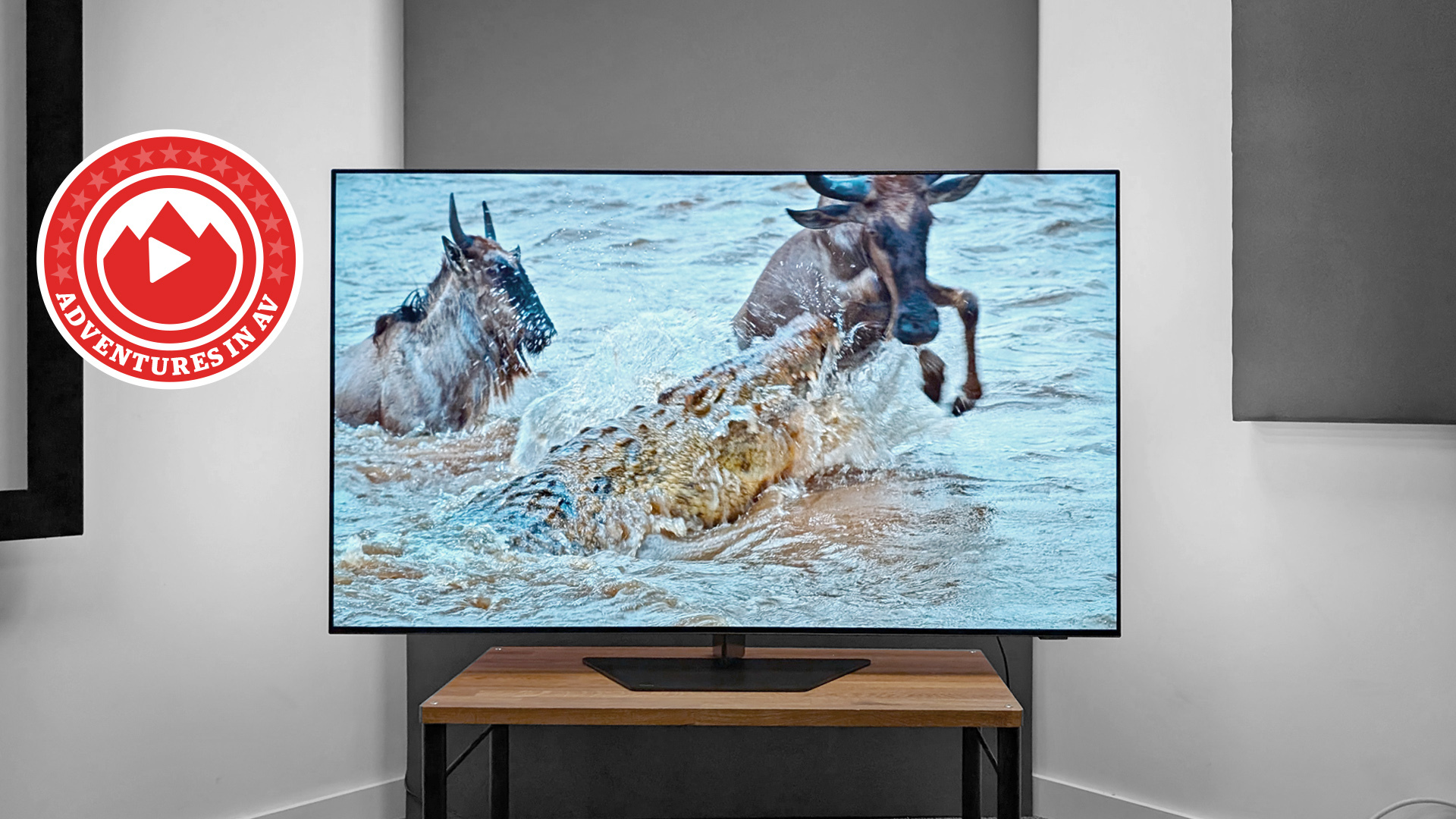I learned a depressing stat this week: HDR accounts for only around 5% of TV viewing
Figures from Philips suggest only a tiny portion of TV-watching is in HDR

What Hi-Fi? Towers recently had a visit from Danny Tack, the TV industry legend behind Philips TVs. It's probably fair to say that he's obsessed with upscaling low-resolution video to 4K quality and with upconverting SDR to HDR, and during this visit, I got a hint at why: very few people are watching proper HDR content on Philips TVs.
I'm not naive enough to think that HDR makes up most TV viewing, but Tack made it sound like the numbers are tiny, so I asked if he would share them with me. He did just that this week, and I'm genuinely shocked and dismayed by them.
According to Tack, "In our High-End range – effectively OLED and Mini LED – [viewing] fluctuates between 4 and 8% for HDR. The rest is SDR. In the [TV] range below (the core range, say for instance The One LCD range) it is less than 1% for HDR."
Let that sink in for a moment: most people who are spending big money on top-of-the-range OLED and Mini LED TVs are using them to watch an absolutely tiny amount of HDR content. Owners of more entry-level models, which are perfectly capable of handling HDR, are watching only a fraction of that tiny number.
That's just baffling to me. I realise there are plenty of people who just don't really care about picture quality and simply buy a TV for news, soaps and the like (and there's absolutely nothing wrong with that, I might add), but if a person cares enough to fork out for a fancy OLED, why don't they also care enough to seek out the HDR versions of movies and TV shows?
It's not as if HDR content is particularly hard to find these days. Pretty much every piece of original content on Netflix, Prime Video, Disney+ and Apple TV+ now comes in HDR; most pay-as-you-go movies from the likes of Apple, Amazon and Sky are available in HDR; Premier League football and the F1 are now broadcast in HDR. The list goes on.
Is it a cost thing? I certainly agree that a service such as Sky is expensive if you want it in HDR, but the HDR versions of each streaming service are only a few quid a month more than the SDR subscriptions. I realise that's not nothing, but we're talking about people who have spent a four-figure sum on their TV.
The latest hi-fi, home cinema and tech news, reviews, buying advice and deals, direct to your inbox.
Perhaps people are still watching loads of broadcast TV, which unfortunately still lags a long way behind when it comes to HDR content. Nine-and-a-half hours of broadcast SDR to just half an hour of HDR, though? On a premium OLED TV? That seems rather at odds with the notion that broadcast TV is in heavy decline.
Of course, these are just the figures of one TV brand; but I don't see an obvious reason those of others would be markedly different. Perhaps the data is skewed by Philips being Europe-only, though, and the global percentages of brands such as LG or Samsung, which sell enormous numbers of TVs in slightly more HDR-saturated regions such as the US and Japan, might be a little bit higher; but I would be somewhat surprised if they were significantly so.
So, if very few people are actually watching HDR, are we going to change our HDR-first approach to reviewing TVs? Actually, no. Our logic is that we are writing primarily for enthusiasts. If someone is researching their next TV purchase by reading the in-depth reviews on our site and in our magazine, we believe that's because they really care about the quality of what they watch: they are more likely to pay that little bit extra for the 4K HDR version of a streaming subscription or pay-as-you-go movie; with any luck they might even own a 4K Blu-ray player; HDR sport could be a fixture of their weekends, too. In short, we think they are contributing a lot to those little HDR percentages.
That isn't to say that non-HDR content doesn't matter. We thoroughly test and report on each TV's ability to upscale and upconvert lower-res, SDR content, from broadcast TV to 1080p Blu-rays and old-school DVDs, because being an enthusiast means watching all of that lovely stuff, too. But HDR is TV at its best, and even if these disappointing figures from Philips suggest it might not quite be the present, it is certainly still the future of TV. And, who knows, if we keep talking about HDR, perhaps a few more people will dig it out and realise just how stunning their TV can be.
MORE:
These are the best TVs you can buy right now
Two flagship TV technologies compared: Mini LED vs OLED
Tom Parsons has been writing about TV, AV and hi-fi products (not to mention plenty of other 'gadgets' and even cars) for over 15 years. He began his career as What Hi-Fi?'s Staff Writer and is now the TV and AV Editor. In between, he worked as Reviews Editor and then Deputy Editor at Stuff, and over the years has had his work featured in publications such as T3, The Telegraph and Louder. He's also appeared on BBC News, BBC World Service, BBC Radio 4 and Sky Swipe. In his spare time Tom is a runner and gamer.

